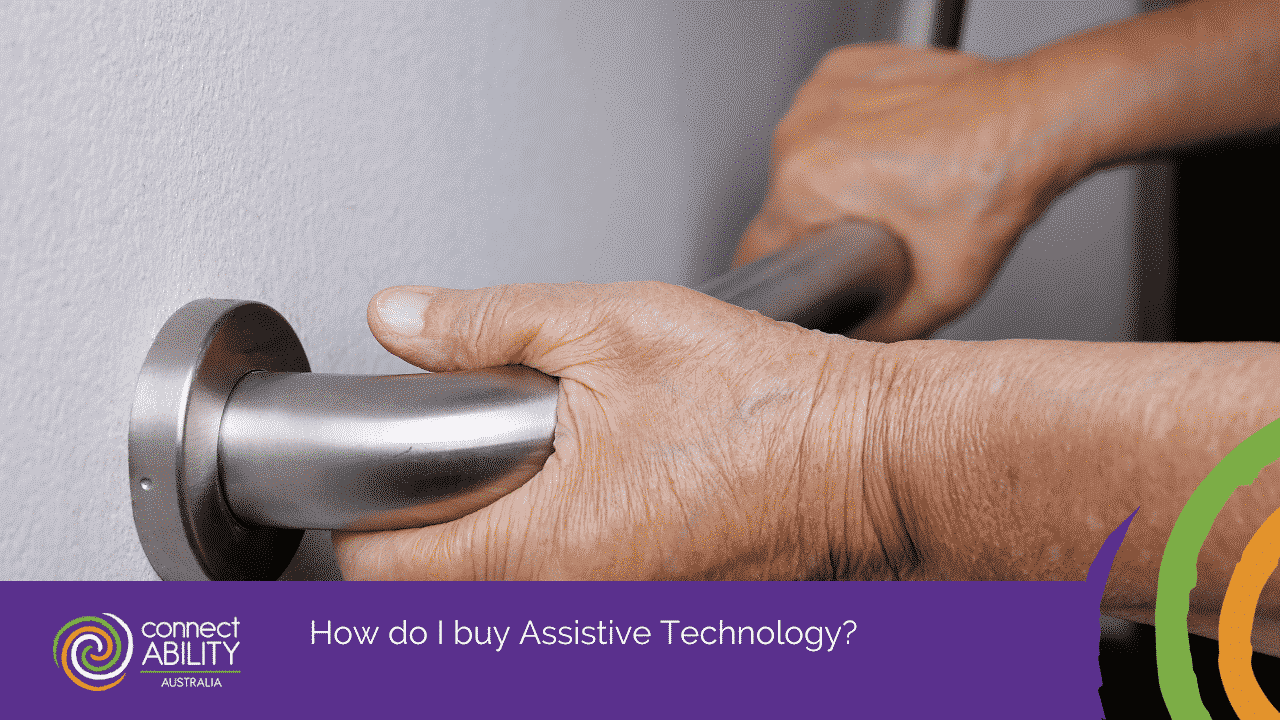The National Disability Insurance Scheme, also known as the NDIS, is a government-funded initiative designed to help improve the lives of Australians living with disabilities.
Under the scheme, the NDIS provides funding for supports and aids according to the participant’s care plan. NDIS participants can purchase assistive technology such as equipment and aids that will help them to live a normal life and achieve their goals.

What is assistive technology?
Assistive technology is the term used for any device, software, or equipment that helps to maintain or improve the functionality and independence of people living with disabilities.
To receive funding for assistive technology, participants must include it in their NDIS plan and state how the technology will help them in achieving their outlined goals. Some of these goals can include enhancing mobility in the participant’s home or community, improving communication with other people, and assistance with processing information and other daily needs.

How is assistive technology included in an NDIS plan?
Each participant is provided with an individual NDIS plan that lists the goals they want to achieve and the supports the NDIS can fund to help reach them.
To get a first plan, a member of the NDIS team will schedule a meeting with the participant or their nominee to have a planning conversation.
Each participant will be assigned a Local Area Coordinator (LAC) who will assist in the various steps of developing, understanding, and implementing a first plan.
To be eligible to receive assistive technology funding, participants must show how the technology would enable them to build their independence and skills, coordinate in building relationships, increase social participation, assist in transitioning to employment, enhance learning, or improve daily life.

What assistive technology is funded by the NDIS?
The NDIS will fund all reasonable and necessary assistive technology supports for people with disabilities including aids and equipment, personal care items, home and vehicle modifications, mobility support, and support for community access.
Local Area Coordinators need as much information as possible to create an appropriate NDIS plan so it’s advisable to bring clinical assessment documents, quotes, and reports that help to identify needs that are not already being supported by the NDIA.
What are the different classifications of assistive technology items?
The NDIS uses four levels to describe the complexity of assistive technology needs.
The complexity level relates to both the cost and the significant risks involved in the installation or use of the assistive technology.
An assistive technology assessor will assign a classification to suit the equipment or home modifications needs of applicants.
Basic Assistive Technology (Level 1)
Basic assistive technology should be of low cost and available for purchase from local retail suppliers. Items should need no more than basic assistance to set up and use.
Basic assistive technologies might include:
- Non-slip bathmats
- Large print labels
- Walking sticks and canes
- Visual doorbells
- Bedding protectors
Standard Assistive Technology (Level 2)
Standard assistive technology should be easily accessible for the participant to buy. Equipment should be tested and trialled before making a purchase.
Standard assistive technologies might include:
- Shower and kitchen stools
- Handrails
- Portable ramps
- Over bed tables
Specialised Assistive Technology (Level 3)
Assistive technology that needs to be adjusted to suit individual support needs falls under the Specialised Level 3 category.
It is important to make sure the assistive technology is supplied and set-up correctly to avoid any risk in your home, work, or place of study.
Specialised assistive technologies can include:
- Power wheelchairs
- Pressure mattresses
- Bed sticks/poles
- Mobile or ceiling hoists
- Bath lifts
- Orthotics
- Prosthetics
- Standard home modifications
Complex Assistive Technology (Level 4)
Complex assistive technology can be custom made or bought from a local retail supplier but need adjustments to suit the participant’s individual support needs.
Complex assistive technologies might include:
- Environmental control units
- Electronic mobility assistive technology for vision impairment
- Pressure cushions
- Pressure care sleep systems
- Orthotics
- Prosthetics
- Communication devices
- Complex home modifications

How do I buy Assistive Technology?
Self-managed
Self-managed participants have control over the supports and services they purchase to assist them in achieving the goals outlined in their NDIS plan.
Self-managers are responsible for choosing the assistive technology provider, negotiating the costs of devices or aids, paying the invoice, claiming the cost from the NDIS, and keeping records.
NDIA-managed
Participants who are managed by the NDIA will be assisted by their Local Area Coordinator or Support Coordinator to find an appropriate assistive technology provider.
The LAC or Support Coordinator will engage with the provider on the participant’s behalf and pay the support provider directly.
Plan-managed
The participant’s plan manager will assist in identifying and sourcing the right assistive technology solutions and will engage with providers on the participant’s behalf.
Plan managers will also establish service agreements and issue service bookings.

Reviewing assistive technology funding
If participants are not satisfied with the assistive technology funding they received, they have the right to ask for an internal review by the NDIA. An internal review can be made by written letter to the NDIA, sending an email, talking to someone at an NDIA office or calling 1800 800 110.



